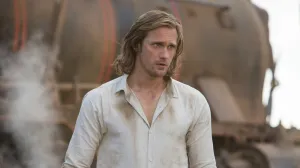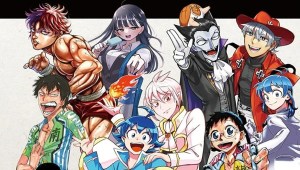
David Aja has been almost entirely absent from comics for the past two years. His last ongoing series at Marvel Comics was Hawkeye, which ended in 2015 with only some cover work over the following couple of years. That’s what makes the debut of The Seeds this week all the more thrilling. When it was initially announced in 2017 at the start of the Berger Books line at Dark Horse Comics, it already stood out as a surefire hit, and the first issue does not disappoint. In his time away from monthly comics Aja has only stepped up his game as a storyteller. His collaboration with writer Ann Nocenti is some of his most complex and carefully constructed work to date.
Videos by ComicBook.com
New fans or those that missed his biggest hits on Hawkeye and The Immortal Iron Fist may not be familiar with Aja’s much-deserved stature among modern comics artists. His schedule is fastidious in nature and it leads to fewer projects over time. Yet each of those projects pushes his artwork forward in a notable fashion and delivers something truly special. Styles and tastes often follow his surefooted development. So for those who are unfamiliar with Aja’s incredible work, here’s a brief rundown on why he’s still one of comics’ essential artists.

Less Is More
Aja takes a minimalist approach to comics both in the individual panel and the overall grid. Each component of the story can be taken apart and studied as a series of storytelling choices, often to the same degree as the recent How to Read Nancy, which breaks down three panels over the course of a couple hundred pages. When a conversation or joke is being told, characters are focused entirely on expression and body language with ample space for dialogue to fill out the frame. His action sequences are dramatically more complex. Every necessary element of a sequence receives its own panel that provides the best possible amount of detail and distance in order to understand what is occurring. While Aja certainly has his flair for the dramatic and can add some stylish flourishes to a page, there is an essence to every individual panel that is required for the story being told. That varies from two fingers releasing a bow string or a complex array of characters arranged for a fight.
While he has crafted some of the most innovative layouts in superhero comics, the construction of a page is equally focused on how to best tell a story. When a simple grid will suffice, there are no gratuitous panels or changes in shape and form. That makes his most complex pages all the more impressive. Inset panels, multiple flows of action, and other advanced elements are deployed with the same grace and clarity as the classic nine-panel grid. Even that arrangement can be made a complex element of his storytelling though, as evidenced in the pages of The Seeds #1. Aja’s approach to comics is like that of a gunfighter in the Old West, he moves with such speed and fluid motion that it requires effort to witness the artistry and finesse with which he accomplishes his goals.

Substantial Style
Aja’s ability to tell a story so surely shouldn’t encourage readers to miss out on his style. While he is certainly a minimalist in nature, he reduces forms to their essential features while maintaining a bold style just as well as Darwyn Cooke. His figures and faces are often filled with humor. His application of negative space lends incredible impact to panels. His utilization of geometry, screentone, and three color shading all create bold worlds that can perfectly fulfill the needs of noir, action, and comedy in different arrays. Even as his style has evolved over the past decade with work from The Immortal Iron Fist to The Seeds showing an incredible distance, there has never been any mistaking a page crafted by David Aja for a page drawn by anyone else.
Even within his ongoing series and individual issues, Aja often likes to flex his creative muscles and alter his own work. Dense pages with nine or more panels in a grid will render actions down to a few elemental lines in order to show a series of punches, kicks, and throws. Only a page or two later the landscape of the comic will explode into a spread fill with many detailed characters, a complex city setting, and all sorts of texture from rain, wind, and blood. This was varied sense of style that made such a big impact in The Immortal Iron Fist and that made sure every fan of superhero comics at the time knew Aja’s name. It’s also a toolkit that would only grow as he moved onto new projects and searched for greater challenges.

Creative Storytelling
When Aja began work on Hawkeye, it quickly became clear that the creators on the series wanted to try something new in each and every issue. By the end of the series Aja had crafted multiple career-defining single issues. Hawkeye #11 portrayed the world from a dog’s point of view, carefully building out infographics to portray understanding and emphasize sense besides sight. The issue deployed a number of other tricks as well and more than earned its Eisner Award. Hawkeye #19 provided readers with insight into the experience of deafness. Every element of the issue is carefully designed, providing everything from sign language to the garbled understanding of a lip reading. Both of these examples and the entire series portrays comics ability to construct empathy wonderfully. Now in The Seeds Aja is clearly approaching the story in a formalist mode and has used his sense of geometry and structure to build narratives within narratives and include the grid itself as a key piece of visual design.
No matter where you look in Aja’s catalog, whether it’s at The Seeds #1 this week, his breakout work on The Immortal Iron Fist, or any comic or cover in between, his power as a storyteller is apparent. It seems like he pushes his work further with each new issue he creates and that makes each new issue worth any wait it might require. With new issues of The Seeds promised for the next four months, it’s a great day to be a comics reader.








